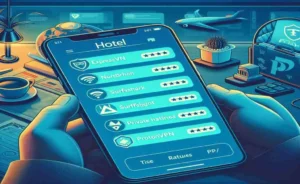Before the starting of order-taking and billing methods, The preparation, presentation, and settlement of a billing procedure in the restaurant are part of the duties of food service staff other than serving food and beverages.
Various systems are followed to check every stage of food-service operations to ensure every item served to the guests is correctly billed.
Larger organizations use a computerized system, while smaller ones use a manual system.
Food and beverage orders of guests are recorded in many ways in foodservice sector depending on the size and the policy of the establishment.
Whatever may be the billing methods adopted in food and beverage service, they should ensure good control as employees in foodservice operations deal with the two most important things in the first hotel food and the second is cash. Both of these will tempt the dishonest staff to indulge in fraud.
Employees may be tempted to lay hands on the food meant for sale and takeaway cash if a strict control system is not implemented.
This can be understood from an example of sitting at two eateries following two different methods of order taking. Eatery A is very simple and located on a wayside and it sells tea, coffee, biscuits, and five varieties of savories that are made every day.
Since the number of items on offer is limited, the proprietor implements a verbal order-taking procedure in the hotel. It means the server enquires what guests want and passes the order orally to the kitchen staff.
The items prepared are served to guests, and either a bill is made or the amount is told verbally to the guests and they pay accordingly.
If the following questions are asked to these two operators, who do you think will answer better?
- What is the sales figure for a day?
- How many portions of each item are sold in a day?
- Of the dishes served, how many of them are billed properly?
- Is the sale of a particular item relevant to the material received from the stores or bought?
- Staff entertaining their friends and family members with food may undercharge or not charge them at all.
- Consuming the food during and after duty hours. The staff members may be tempted to eat food meant for sale without anyone’s knowledge as there is no record.
- Increased food cost and pilferage rate.
- Non-availability of a proper account of sales.
- Inability to pay creditors and thereby leading to the closure of the business.
To avoid all these and to run the business successfully, food and beverage orders should be recorded by maintaining a good checking system.
Different Methods of Order Taking and Billing
Order-taking procedure in hotels has the following functions:
- Check and Bill the system.
- Service with the order.
- Duplicate system.
- Triplicate checking system.
Orders from the guests for food and beverages should be recorded for effective control and to avoid confusion during service. The food order must be taken down clearly on a scribbling pad taking all the necessary information.
No food order should go out of the kitchen without the KOT and it is the responsibility of the executive chef to ensure that this procedure is followed.
If any dish goes out of the kitchen without KOT, the staff responsible for this act will have to pay for it.
Checking System in Food Service Operation
The checking system in food-service operations refers to order-taking and billing methods in food and beverage. A good order-taking system will ensure that every dish that goes out of the kitchen is recorded and billed.
If it is complementary food, then the kitchen order ticket must be authorized by the head waiter.
The KOT must provide the following information:
- Name and code of the waiter serving the guests.
- Table number.
- Food order and quantity ordered.
- Date and time of the order taken.
- The number of guests.
- Signature of the order taker.




